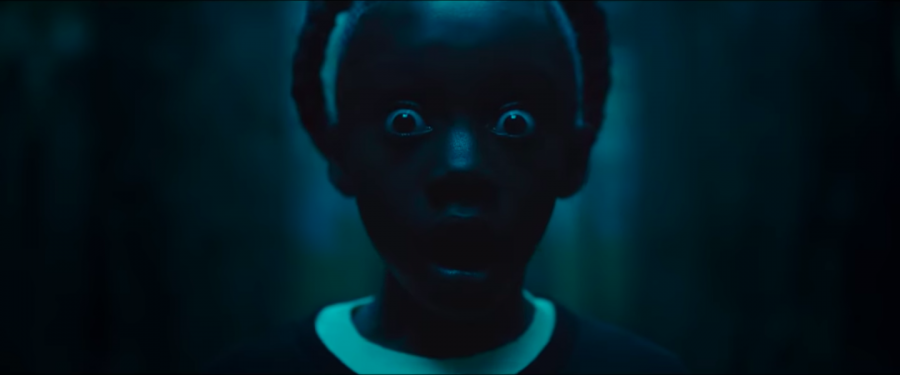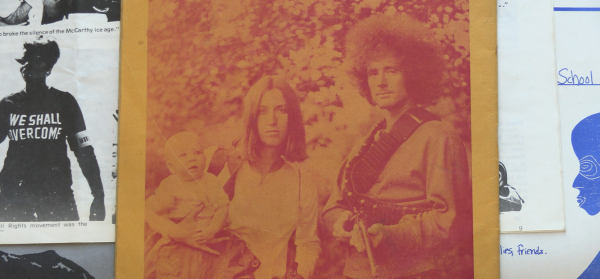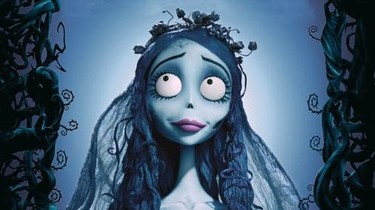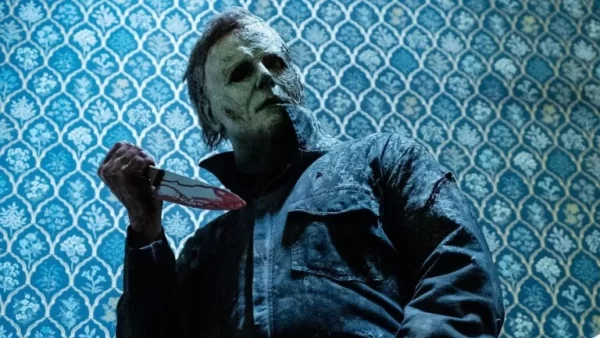If you loved “Get Out,” you need to go see “Us”
With his new film, “Us,” Jordan Peele shoves viewers face first into the horror of the mundane; the fear of ourselves.
In 1986, as a young Adelaide Thomas walks into a house of mirrors, eerily illuminated by a sign- “Find Yourself”-hanging overhead, we begin to follow her on a journey of identity through the gaze of religion, race and consumerism.
Present day, Adelaide Wilson (née Thomas) is a woman who travels to the idyllic and somewhat isolated summer house near Santa Cruz with her husband, Gabe, and her two children, Zora and Jason. Adelaide is struggling her traumatic past, specifically events that occurred just underneath the boardwalks of Santa Cruz. Confronted by doppelgangers, the Wilson family is forced to confront themselves.

In this film, director Jordan Peele, director of “Get Out,” has created a new vocabulary for visual media and crafts a carefully calculated classic. He uses visual language to his full advantage. The film opens with a television set accompanied by various elements of 1980’s memorabilia.
On the television set, a young Adelaide views an advertisement promoting Hands Across America, a real life hand holding chain in May of 1986 that grew to consist of 6.5 million people. In a later scene, Adelaide’s husband is seen watching the Giants baseball game. Both of these television programs will foreshadow future elements in the film, the former to a greater extent than the latter.
Peele’s shots and use of sound are cut with precision to convey space to the viewer. As we travel with young Adelaide, the shots are as wide as she is small in comparison to the vast carnival; the individual is small to the vast society. The sounds of a roller coaster and Ferris wheel creates pacing that feels tight and clear.
Later on, Peele’s producing skills help confirm a claustrophobic fear, the terror that resides within. Car scenes capture the automobile at every angle. Inside the car, there is an interior shot of the back windshield showing a sticker with four family members who look exactly like the Wilson’s. This shot in particular both conveys space and foreshadows the rest of the plots in a simple picture.
When the Wilson’s are forced to confront their fear, Peele uses a panorama to show the limits of their space. Reflective surfaces are used to widen space for expanded symbolism. Although less inventive than “Get Out,” the orchestration is tight with old themes layering on top of one another as the events of the film escalate. All these features are later revealed to have a double meaning.
As Peele manages to incorporate film elements in two facets, it is clear based on visuals and plot that this is a story about duality. Peele is not a man of coincidence. Duality is present within costume design – three shirts in particular that are seen in the movie express a duality.
In order of appearance, young Adelaide has a “Thriller” shirt won for her by her father. The shirt features Jackson, who played a dual role in pop culture – is he a cultural icon or a monster? In his music video for “Thriller,” Jackson playfully addresses duality as a friendly date transforms into a werewolf under the full moon.
Worn by Jason early on, a Jaws T-shirt represents a double trap. Double traps are as they sound, two potentials for danger. Wearing a Jaws T-shirt to the beach leaves audience members anticipating an ocean attack but the real horror is more subtle.
Perhaps the article of most importance is a Howard University sweater worn by Adelaide’s husband, Gabe. Gabe represents the stereotypical black nerd but again, Peele expands and draws out the duality of what it means to be a black man of intellect. As events escalate, Gabe reveals he is defined more by a progressive masculine nature that allows him to protect his family while also letting his wife take charge when it feels necessary.
“Us” is dense. Peele uses every element at his disposal to convey one central theme; duality. While many had anticipated that “Us” would be race-conscious in the same way as “Get Out,” this film delivers a different tone. The Wilson’s family friends, the Tyler’s (who are white), make comments that are clearly ignorant but their lack of self-awareness does not push to a level of sinister. On the beach, Kitty Tyler points out a white model wearing a headdress stating, “That’s so pretty.”
It may be unpleasant and ignorant but Peele is not forcing white viewers to confront their racism. Peele is forcing all audiences to look in the mirror and confront the reflection’s biases.
“Us” is worth a rewatch and another rewatch. Lupita Nyong’o gives an Oscar-worthy performance. The number of Easter eggs embedded in this film is insurmountable. The screenplay, written by Peele, provides an immaculate rhythm, despite a monologue at the beginning and a monologue toward the end that slow what would otherwise be perfect pacing.
Peele has waited and watched his fair share of horror films. With “Us,” he applies his expertise and creates great expectations for any future film.
For those reasons, “Us” has the potential to hit audiences harder as a stand alone horror classic. “Get Out” is a cultural touchstone that requires white viewers to reflect on their social conscious and results in necessary guilt for their direct or indirect racism.
“Us” is about everything. There are subliminal messages, there are grand statements about the state of America; Peele manages to take a snapshot of what America could become and take it to a new level.
“Us” leaves the audience with unanswered questions. Although there are moments in which the screenplay is far too explicit, it prompts philosophical thought. “The Shining” questions our sanity. “Psycho” questions when healthy relationships end and who we are behind our mask. “The Thing” questions if trust is ever possible.
It’s hard to digest exactly what “Us” is asking, but it is certainly identity based. How do we reconcile and confront the version of ourselves we’ve left behind?
In a new move for Peele, religion becomes a major facet of the text. A homeless man is seen at various points of the film holding a cardboard sign with “Jeremiah 11:11” written on it. Jeremiah 11:11 refers to a biblical quote;
“Therefore thus saith the Lord, Behold, I will bring evil upon them, which they shall not be able to escape; and though they shall cry unto me, I will not hearken unto them.” With this allusion, Peele is asking a question that lacks answer: How do we feel faith when it seems as if God has abandoned us?
Email Julia at [email protected] or follow her on Twitter @juliadonohue3.











